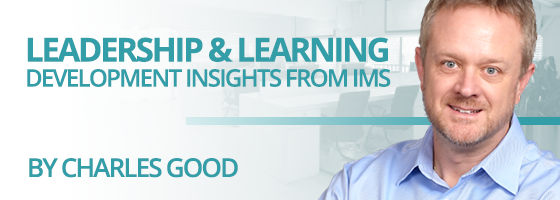Many of us would like to become better at strategy, but where do we start? IMS educator Dr. Julia Sloan, author of Learning to Think Strategically, provides a list of five critical attributes of strategic thinking. And the good news is that anyone can develop them with practice.
IMAGINATION
Innovative strategies are developed in part by using our imagination to discover novel solutions. We need both convergent (converging on a best solution) and divergent thinking (discovering innovative solutions that are ‘outside the box’). And it is the divergent piece that leans heavily on our imagination prowess in order to generate new ideas in a free-flowing, unstructured way.
So stay curious and keep looking for new experiences that will offer you new perspectives and frames of looking at strategic issues. Even something as simple as disconnecting from electronic media and going for a walk outside can give you an imaginative boost. You can also strengthen your imagination and divergent thinking across four categories to the following question. How many uses can you think of a spoon?
- Fluency—how many uses can you come up with
- Originality—how uncommon are those uses
- Flexibility—how many categories to your answers cover
- Elaboration—what is the level of detail in your answer
BROAD PERSPECTIVE
Strategic thinking requires you to see a situation from a broad perspective. In order to accomplish this, you need to converse with a diverse range of people. You also need to look at both the altitude and the longevity of the problem by asking yourself the following questions:
- What would happen if you viewed this problem from a farther or closer vantage point?
- What is the time frame you are looking at the problem (6 months, 1 year, or longer).
JUGGLE
This attribute assesses your ability to pay attention to many things at once. More specifically, it means dealing with incomplete information, inaccurate data and constantly changing situations. The ability to maintain and juggle competing strategic demands successfully is required of all strategic thinkers in today’s global business environment.
The only way to get better at this is to immerse yourself in this process.
LOSS OF CONTROL
Although it may be counterintuitive to what they teach in many strategy courses, it is critical to focus on what you can’t control, not just on what you can control. Why? Because often it is the things over which you have no control over that will differentiate your strategy from the competition.
Common uncontrollable factors include economic shocks, natural disasters and black swan events (high impact events that are unexpected and hard to predict).
DESIRE TO WIN
This attribute is the answer to the fundamental question driving all successful strategies, which is those who want it the most will probably win. Your desire to develop a winning strategy from the outset provides the motivation and commitment to stay the course when you encounter obstacles and setbacks.
According to Dr. Sloan, a great approach to further developing the critical attributes of strategic thinking is to engage in the arts or other creative endeavors on a regular basis. The process of observation and study of art can develop your skills of observation and examination that will allow you to see the world around in unique and novel ways.
ATTRIBUTES OF STRATEGI THINKING
By focusing on these five critical attributes of strategic thinking you can improve your ability to spot new opportunities, increase innovation, and become a more effective problem solver.
If you want more ideas to help you think strategically you can read some of our previous blogs on Seeing Around Corners, or Becoming a Strategic Leader.
ABOUT CHARLES GOOD
Charles Good is the president of The Institute for Management Studies, which provides transformational learning experiences that drive behavioral change and develop exceptional leaders. Charles is an innovative and resourceful leader who specializes in bringing people together to develop creative organizational and talent strategies that enable business results. His areas of expertise include assessing organizational skill gaps and leading the design, creation and delivery of high impact, innovative learning solutions that achieve business goals.

1 Comment